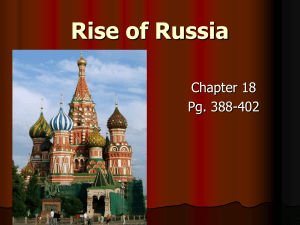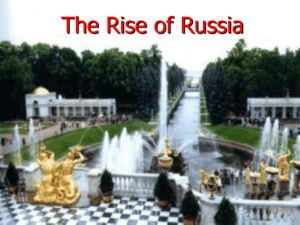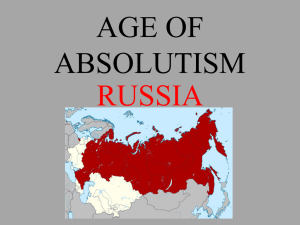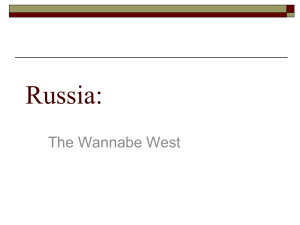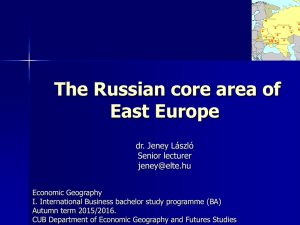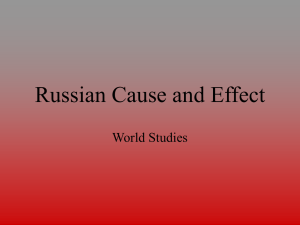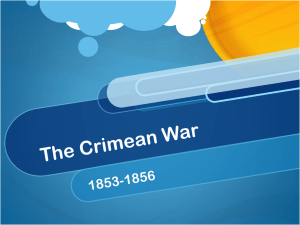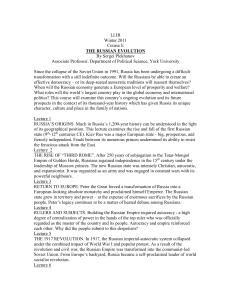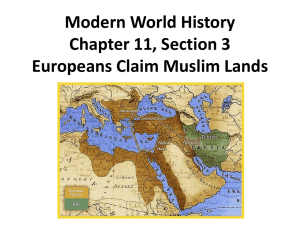Day 1 - Josh Murphy ePortfolio
advertisement
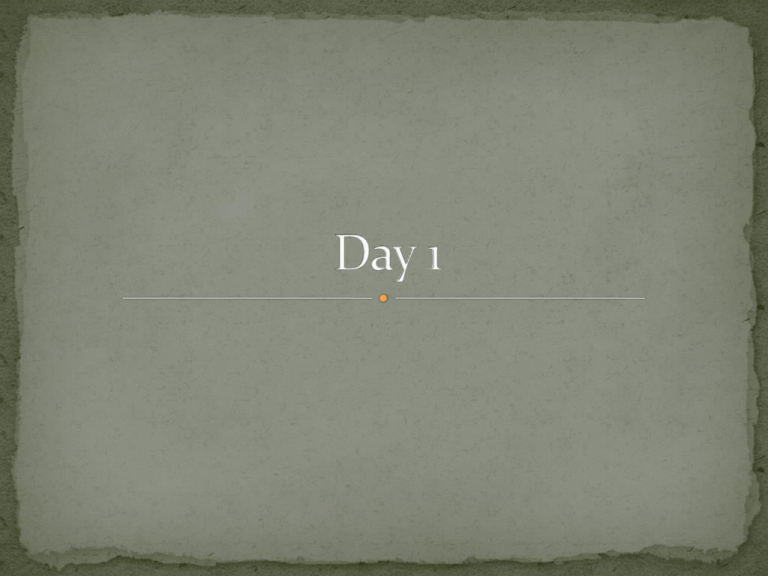
Chapter 15 Evaluate the following statement: the relative rise of the West after the 14th century was not so much the result of Western innovation as the decline of civilizations in the Middle East and Asia. Compare the world of 1250 and the world of 1450. Chapter 16 Describe the ways that the creation of a global economy in the 16th and 17th centuries differed from the previous trade networks that had existed between civilizations. Evaluate the reasons allowing the West to establish its dominance in the global trade network of the 17th century. Chapter 17 Compare the ways in which the Renaissance, Reformation, and Enlightenment had an effect on the political organization of Europe. Trace economic changes between 1450 and 1750 and how those changes altered the social organization of western Europe. The Rise of Russia Online Test Review Questions Due Dec. 10/13. Dec. Blog Discussion Due 12/17 for all classes by midnight. Map Notebook Check During Chapter 18 Test Dec. 10/13 Chapter Theme In the 300 years between 1450 and 1750, Russia rose to prominence as a major power. Under Ivan III and Ivan IV, Russia pushed into central Asia and added vast territory along with great ethnic and religious diversity to its base in eastern Europe. Future consequences? While firmly based in the culture of the old Byzantine Empire, Russia began a selective process of westernization. Under Ivan III and successive rulers, Russia became an absolute monarchy characterized by a “dominant aristocracy, coercive agricultural labor systems, and the absence of a substantial merchant class.” These traits would have serious consequences for the modern nation. Compare/Contrast Model (Possible Essay Question) Both expansions were based on military superiority over less technologically advanced peoples. There were economic zones along frontiers and a colonial system, and incorporating ethnic diversity resulted. Russian expansion was different because the Russians created a land-based empire. They lacked a mercantile fleet and had only a limited military navy. The Russians failed to achieve economic parity with Western empires, and they did not cause a demographic disaster similar to the European effect on the Americas and Polynesia. The Russians did not establish the same economic dominance over frontiers as did the West. The Russians failed to develop merchant classes, and the state, unlike in the West, was in charge of capitalizing ventures. Russian retention of an estate agricultural system was more typical of dependent economic zones than of Western core regions. They retained a coercive labor system, depended on the export of raw materials, and imported manufactured goods and luxuries. Westernization introduced Western art forms. Peter the Great mandated Western dress styles. Western political organization was used to establish an effective tsarist autocracy. Although grants of local authority to the nobility under Catherine the Great reduced the ability of the central government to control the masses of the people. (Greeks?) Although the economy remained largely agricultural, economic reforms enabled the development of industry essentially devoted to military production (mining and metallurgy). Economic development was based on the increasing exploitation of a peasant labor force. Westernization failed to overcome the separation between Russia and the West because the reforms affected only the nobility and did not make complete changes among them. The masses continued to rely on the Orthodox church as the primary cultural influence. (Religion) Social organization remained typical of large estate agricultural systems. Unlike the Western development of a proletariat less tied to the land, Russia maintained a rigid serfdom. Russia was drawn into the global trading network as a dependent zone. Due by Dec. 10/13. Create multiple-choice questions based on visuals in the chapter. The questions should have five possible answers and test analysis and interpretation of the visuals, not simply comprehension. Post questions online in the appropriate blog post with answers. Use these questions as a study guide for analyzing visuals on the AP World History Exam. Use these hints, tips and tricks to improve your chances of a higher score on the AP Test. In developing the body of your essays, you should keep in mind that the number, order, and nature of the paragraphs should be dictated by the organizational list in the introductory paragraph. The main idea of each paragraph must support the thesis, and all the specific details must in turn support the main idea. All these supporting details should be facts and examples that are pertinent to the main idea of the paragraph and to the overall thesis. Map Notebook Check During Test To prepare you for analyzing visuals on the AP* World History test, refer to maps in the text and then answer the following essay prompt: Compare the boundaries of the Mongol Empire to the Russian empire in 1800. How accurate was the Russian claim that it was the heir of Chinggis Khan and the unifier of central Asia? How were the empires different? Prepare to bring your map notebooks up for a grade. Societal Comparison: Russia versus western Europe Document Analysis: Nature of Westernization Dialectical Journal: In Depth: Multinational Empires
